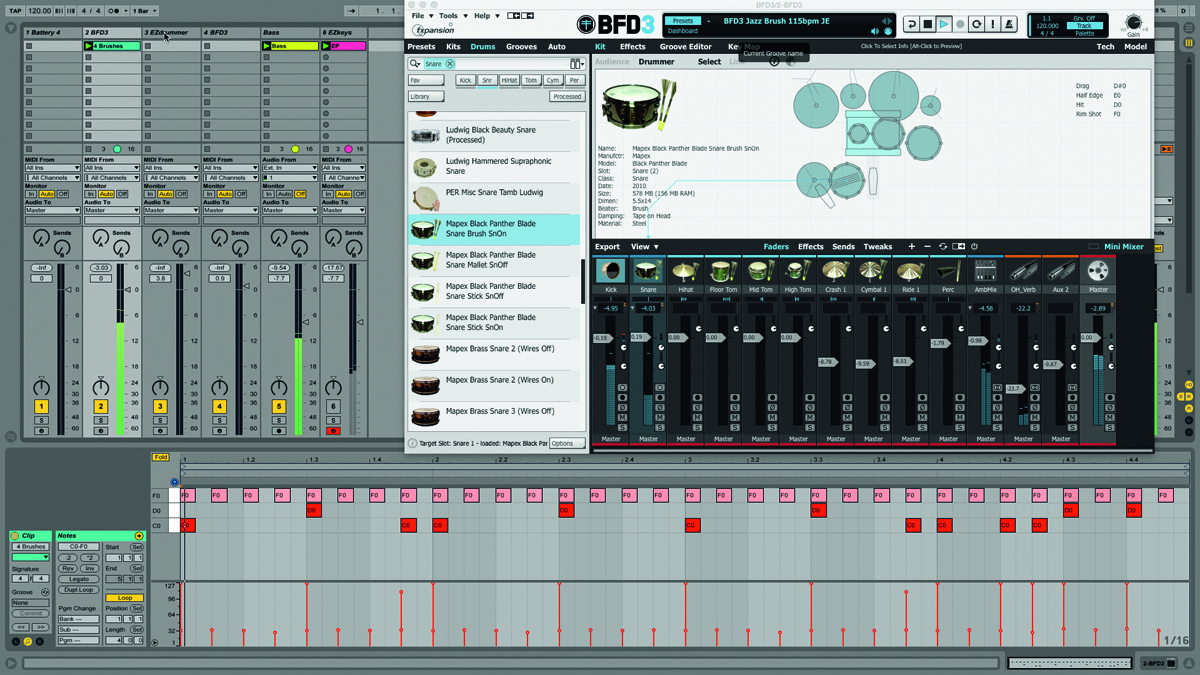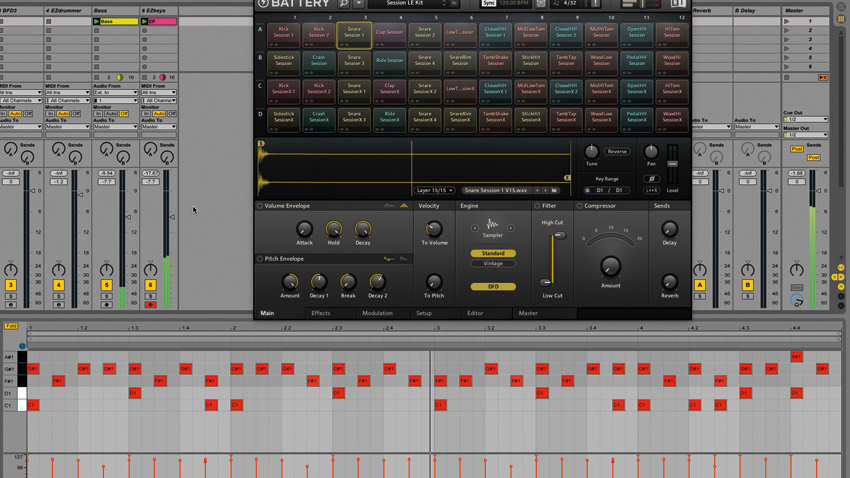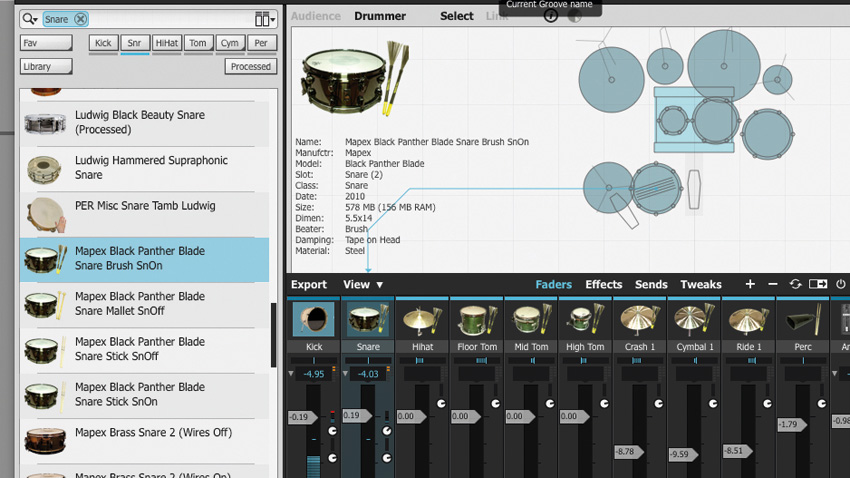How to explore the tonal range of a snare drum
Learn the various articulations and sounds that can be elicited from the drum kit's central instrument

At the heart of the modern drum kit sits the snare drum, providing the backbeat to all forms of pop, rock, dance, urban and electronic music for over 60 years now. Although it could be argued that the kick drum is the most 'important' half of the central kick/snare partnership, the snare is the more expressive of the two, able to embellish or utterly transform a groove through its far higher level of playability.
Between 12" and 14" in diameter and 3.5" and 10" in depth (but usually 5.5" or 6.5"), and with heads on the top and bottom, the shell of the snare is usually made of metal or wood - metal being brighter, and wood being the warmer. The eponymous snares are a rack of long wire springs underneath the drum, touching the bottom head to add the characteristic crack and noise to the sound.
Drummer gags aside, the snare drum is a very serious instrument, the skilled playing of which draws on a standardised set of complex techniques called rudiments that are practised by drummers just as a pianist will practise their scales. It's also capable of outputting a pretty broad range of sounds simply through being struck in different ways with different types of stick.
In this walkthrough, we'll show you the gamut of noises that can be elicited from your virtual snare drums.

Step 1: Hitting the centre of the snare head with the tip of the stick results in the 'standard' snare drum sound. With this, you're hearing the full crack of the top head and the snares on the bottom, along with the unhindered resonance of the body of the drum - this is the snare drum at its fattest and most 'general purpose'.
Regular hit

Step 2: When power is the priority, it's time for a rimshot. With this, the shaft of the stick hits the rim of the drum as the tip hits the head, for extra 'crack' and volume. Some multisampled drum kits trigger the rimshot at maximum velocities - when programming fills, be sure to throw a few in, for accenting and emphasis.
Want all the hottest music and gear news, reviews, deals, features and more, direct to your inbox? Sign up here.
Rimshot

Step 3: A sidestick articulation engages the shell more than the head. The tip of the stick is held down on the centre of the head and used as a 'hinge' for the shaft, which is brought down onto the rim for a distinctive 'click'. This is ideal for quieter moments in a track, contrasting perfectly with the full snare sound.
Sidestick

Step 4: While whole books have been written on the subject of brushes, a simple way to use them is as a softer alternative to sticks. Brushed hi-hat samples are incredibly few and far between, however, so if you don't want to mix sticks and brushes, you might want to move your hi-hat pattern to the snare.
Brushes

Step 5: By releasing the lever on the side of a snare drum, the snares themselves are disabled, for a rounder, less attacking sound that sits halfway between snare and tom. 'Snares off' samples are also rare, but the technique is a staple of folk and other acoustic styles - another good option for quieter, more organic passages.
Snares off

Step 6: Sampled snares played using mallets, rods, fingers and other implements are hard to come by, but such unusual sounds can be very useful, so hunt them down if you can. For example, Battery 4's Session LE kit includes a rim sound, and Toontrack's Indie Folk EZX for EZdrummer 2 features a snare played with mallets.
Rim
Mallet
Get schooled in a universe of compression - over 14 pages and in 17 videos - with issue 222 of Computer Music. Includes FREE VST/AU effects rack plugin, FX TimeTrip sample pack and more!
Computer Music magazine is the world’s best selling publication dedicated solely to making great music with your Mac or PC computer. Each issue it brings its lucky readers the best in cutting-edge tutorials, need-to-know, expert software reviews and even all the tools you actually need to make great music today, courtesy of our legendary CM Plugin Suite.
